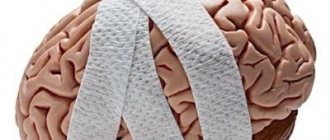Symptoms
Clinical manifestations of the disease depend on the conditional form:
- Classic Friedreich's disease (typical form);
- An atypical form of Friedreich's disease (with a slight breakdown in chromosome 9).
For the first time, classical Friedreich's disease (typical form) can make itself felt at a fairly young age, usually up to 25 years, less often the disease has a slower rate of development, then the first signs appear in the fourth decade of life (atypical form).
The disease often manifests itself with damage to the lower extremities, gait disturbances and motor coordination disorders (based on ataxia, which is of a mixed nature, cerebellar-sensitive). The patient notes uncertainty when walking, unsteadiness of gait, even falling. Over time, disturbances in the movements of the upper limbs and trembling in them may occur.
Over time, other neurological changes occur:
- Weakness in the leg muscles, up to paresis and paralysis (at the same time, the knee and Achilles reflexes decrease and later fade away, but pyramidal signs may be detected);
- Violation of deep and superficial sensitivity;
- Development of hearing loss, optic nerve atrophy;
- Speech impairment (if the disease lasts more than 5 years);
- Decreased cognitive function.
Somatic (extraneural) manifestations in the clinical picture of Friedreich's ataxia are the following symptoms:
- Shortness of breath, rapid heartbeat, paroxysmal cardialgia (these symptoms are caused by the development of cardiomyopathy);
- Skeletal anomalies in the form of kyphoscoliosis, cavus foot (“Friedreich’s foot”);
- Ovarian dysfunction, hypogonadism, diabetes mellitus.
Taking into account the damage to various structures of the nervous system, as well as the involvement of other body systems in the process, for diagnosis it is customary to distinguish between mandatory signs, common signs, and rare signs.
Obligate (obligatory) symptoms of the disease include:
- The onset of the disease is before the age of 25 years.
- Progressive cerebellar-sensitive ataxia.
- Progressive loss of coordination in the limbs.
- Fading knee and Achilles reflexes.
- Decreased deep sensation in the legs.
- Dysarthria – jerky, slow speech.
Common, but not obligatory, signs of the disease include:
- Pathological Babinski reflex.
- Hollow foot.
- Kyphoscoliosis.
- Weakness, hypotrophy and atrophy of the muscles of the limbs.
Rare signs of Friedreich's ataxia:
- Optic nerve atrophy.
- Nystagmus.
- Sensorineural hearing loss.
- Postural tremor.
- Vertigo.
- Spasticity in the limbs.
- Moderate cognitive impairment.
The clinician should be alerted and directed to look for other diseases by the presence of the following signs: early manifestation of the disease (up to 2 years), severe cognitive impairment, the presence of extrapyramidal pathology syndromes, sensorimotor neuropathy, decreased speed of nerve impulse transmission along motor fibers, ophthalmoplegia.
It should be remembered that the atypical form of the disease is not characterized by: total areflexia, cardiomyopathies, endocrine disorders.
CT scan
The lack of adequate treatment accelerates the progression of the disease and leads it to a severe stage. The main diagnostic method for all ataxias is computed tomography of the brain. But in this case, it is ineffective, since most changes in the brain with Friedreich's ataxia are detected only in the later stages. This is explained by the spinal localization of changes. Early stages of the disease are not visible on CT scans. In the later stages, only minor atrophies of the cerebellum and hemispheres, some expansion of the cerebral cisterns, lateral ventricles, and subarachnoid space can be detected.
Diagnosis of Friedreich's ataxia
First of all, during the diagnosis of the disease, the clinical picture should be assessed and the obligatory manifestations should be identified. There are also a number of important instrumental research techniques:
- MRI of the brain. Allows you to find spinal cord atrophy (reduction in the diameter of the spinal cord, increasing in the caudal direction - at the expanded stage). MRI allows visualization of moderate atrophic changes in the pons, medulla oblongata and cerebellum.
- At the initial stages of the development of the disease, it is important to conduct neurophysiological studies:
— Electroneuromyography: disturbances in the conduction of nerve impulses predominate in sensory fibers rather than in motor fibers.
— Glucose tolerance test (exclude diabetes).
— X-ray examination of the spine and feet (detection of bone deformities).
— ECG – conduction disturbances, inversion of the electrical circuit, hypertrophy of the interventricular septum. It should be noted that cardiac disorders often precede neurological changes by several years.
- MSCT of the brain. It is ineffective in diagnosing the disease, since it allows visualizing cerebellar atrophy only in the later stages. Indirect signs of the disease are: atrophy of the hemispheres, expansion of the stem cisterns, lateral ventricles.
It is also important to conduct a number of blood tests: genetic research (DNA diagnostics - detection of mutations in the FXN gene using blood PCR) and determination of succinate dehydrogenase using a cytochemical method. It is important to note that prenatal diagnosis of chromosomal mutations is now possible.
Differential diagnosis of Friedreich's ataxia is carried out with the following diseases:
- Hereditary ataxia caused by vitamin E deficiency: similar in clinical picture, however, upon diagnosis, a number of laboratory changes are detected: reduced levels of vitamin E in the blood, acanthacytosis in the blood smear, lipid metabolism disorders.
- Other metabolic diseases with an autosomal recessive type of inheritance: gangliosidosis and galactosialidosis (detection of the activity of B-galactosidase and hesosaminidase A); Krabbe disease (study of galactosylceramidase activity); late variant of Niemann-Pick disease (determination of the content of sphingomyelins in the cerebrospinal fluid, examination of sternal puncture to detect “foam” cells).
- Multiple sclerosis: the clinical picture of this disease is dominated by pyramidal symptoms: often brisk tendon reflexes, pyramidal tone, loss of abdominal reflexes, foci of demyelination on MRI, alternating remissions and exacerbations. Not typical: areflexia, hypotension, somatic manifestations, amyotrophy.
2. Reasons
As stated above and as the name suggests, Friedreich's familial ataxia is an inherited disease. To date, the genomic region responsible for the onset and progression of specific symptoms has been identified and identified; with one or more mutations in this region of the 9th chromosome, the coding of frataxin, one of the proteins that regulates, in particular, the absorption of iron and the excretion of excess iron compounds from the body, is disrupted. In case of deficiency or absence of frataxin, free radicals are formed, with the participation of which biochemical reactions are destructive for neural tissues. Signs of organic damage to the central nervous system are found in many nerve plexuses and bundles of the spinal cord, in the cortex and subcortical zones of the brain, as well as in the cerebellum, which forms a characteristic clinical picture.
Visit our Neurology page
Treatment
There is currently no pathogenetic treatment for the disease, so all measures are aimed at eliminating the symptoms of the disease.
Patients with Friedreich's ataxia are treated by doctors of several specialties: cardiologists (patients often turn to them for the first time, and often these patients are observed with a diagnosis of rheumatic heart disease for several years, until other symptoms of the disease manifest themselves), orthopedic traumatologists (surgical treatment of defects foot, kyphoscoliosis), endocrinologists (diagnosis and treatment of diabetes mellitus and hormonal dysfunction of the ovaries), less often ENT doctors and ophthalmologists encounter this disease in their practice.
However, more often, and logically, the patient is seen by a neurologist, who coordinates the patient’s actions (refers to specialized specialists for diagnosis and correction of extraneural disorders).
As for drug therapy, treatment is of a general strengthening nature:
- Drugs with an antioxidant effect (ethylmethylhydroxypyridine succinate), when the disease is combined with diabetes mellitus - thioctic acid (Berlition, Thioctacid, Octolipen); vitamins A, E, multivitamins).
- Agents that improve metabolism in the heart muscle and in the cells of the nervous system: meldonium, cocarboxylase, riboxin. They also use a drug that is structurally similar to coenzyme Q10 - idebenone.
- Drugs with nootropic effects (choline alfoscerate (Cerepro, Gliatilin, Noocholin), piracetam, aminobutyric acid).
An important method of treatment is exercise therapy and massage. These methods allow patients to maintain muscle strength and maintain motor activity for a longer period of time, and also help reduce the intensity of pain in the muscles of the limbs.
MRI
MRI is prescribed, with the help of which it is possible to detect atrophy in the spinal cord in the early stages, and also examines the transverse dimensions of the spinal cord. With Friedreich's ataxia they are below normal. Moderate atrophy of the pons, cerebellum and medulla oblongata is also visible.
Using an electrophysiological study, the degree of damage to the sensitivity of the nerves of the limbs is determined. With Friedreich's ataxia, the amplitude of the action potentials of the sensitivity of the nerves of the limbs is significantly reduced or completely absent.
Disease prognosis
Given the lack of pathogenetic treatment, it should be understood that the disease is steadily progressive. Patients with a diagnosed disease live on average 10-15 years and, as a rule, no more than 30 years from the onset of its development; in women, the course of the disease is more favorable - their life expectancy often exceeds 20 years. Death occurs as a result of the development of pulmonary or heart failure.
However, timely diagnosis and application of the above treatment methods, impact on concomitant pathology, and prevention of complications contribute to improving the quality of life and prolonging it in patients with Friedreich's ataxia.
4.Treatment
There is currently no etiopathogenetic therapy or means of prevention; all measures taken (even radical ones, for example, orthopedic surgery) are only palliative in nature and aimed at mitigating the dominant symptoms. The prognosis is generally unfavorable: the steady progression of the neurodegenerative process results in death within 15-20 years from manifest manifestations. However, in some cases, when the patient is under constant therapeutic control and it is possible to slow down the development of severe cardiac, pulmonary, and endocrine insufficiency, patients live to old age.
Forecast
Friedreich's ataxia is characterized by a steadily progressive course, which sooner or later leads to death. Death occurs due to cardiac or respiratory failure.
According to statistics, approximately 50% of patients do not survive to 35 years of age.
In women, the disease lasts at least 20 years, and for men this figure is 2/3. Occasionally, if there is no diabetes and heart problems, the patient can live to an old age and overcome the 70-year mark.
Clinical picture
In most cases, the first manifestations of Friedreich's ataxia are characteristic of the age from 10 to 20 years, but with less frequency the onset of the disease is possible in the third and fourth decades of life.
First, the patient's gait is disrupted - it becomes shaky and uncertain. Frequent trips and falls are common.
The second to observe are disturbances in hand movement , trembling appears, which leads to changes in handwriting. Further, speech is impaired - it becomes slow and unintelligible, hearing function decreases and there is constant weakness in the legs.
Neurology distinguishes two types of AF: cerebellar and sensory.
It is difficult for the patient to perform the Romberg pose (standing position, legs together, eyes closed, arms extended forward), misses when attempting the heel-knee test (lying on your back with eyes closed, we raise one leg high and try to hit the knee of the other leg with the heel) and the toe-to-toe test (put your finger on the tip of your nose with your eyes closed).
The Achilles and knee reflex disappear. Babinski syndrome develops - when the outer side of the foot is irritated, the big toe extends.
If the disease progresses, then there is a total loss of periosteal and tendon reflexes, and a violation of vibration sensitivity and joint-muscular sensation occurs.
In the photo, a symptom of Friedreich's hereditary ataxia - Friedreich's foot
There is a loss of muscle tone and paresis of various muscles, primarily in the distal parts of the lower extremities. Then the arm muscles are affected, causing the person to lose the ability to self-care.
Some develop dementia (acquired dementia) and pelvic disorders, which may be accompanied by wandering eyes, blindness due to optic atrophy, and hearing loss.
The following disorders are observed outside the nervous system :
- In 90% of cases , damage to the heart muscle causes arrhythmia and heart failure.
- Friedreich's foot is a foot with a high and concave arch, with bent outer phalanges and straightened main phalanges. Club feet, scoliosis, and curvature of the arms and legs are also noted.
- Endocrine disorders - infantilism (preservation of signs of earlier stages of growing up), diabetes mellitus, hypoganism (appearance with feminine features due to reduced production of androgens) in men, ovarian dysfunction in women. Rarely, cataracts occur.
History and distribution of pathology
Friedreich's ataxia was first identified as an independent disease in the 60s of the 19th century. It was then discovered that the epidemiology of this anomaly is uneven. It is also possible to trace the connection between the disease and the ethnicity of the patients. Most often, this pathology occurs in people born from consanguineous marriages. For the same reason, it is more common among small ethnic groups. Compared to other ataxias, Friedreich's disease is quite common. It occurs in 1–7 people per 100 thousand population. Currently, it is already known what genetic disorders lead to this pathology, therefore, with a burdened hereditary history, it can be diagnosed at the stage of intrauterine development of the fetus.
Friedreich's disease: treatment of pathology
Despite the fact that neurology as a science is currently quite well developed, this disease cannot be completely cured. This is due to the fact that it is caused by a genetic mutation that cannot be influenced. Nevertheless, doctors correct neurological disorders, making life easier for patients. Antioxidants (medicine Mexidol) and drugs to improve cerebral circulation (medicines Piracetam, Cerebrolysin) are used. These medicinal substances help slow down degenerative processes. To improve motor function, physiotherapy, orthopedic correction, and massage are performed. In some cases, surgical treatment is necessary (with significant curvature of the feet).
Prognosis for Friedreich's disease
Considering that the pathology refers to slowly progressive chromosomal abnormalities, patients live on average to 30–40 years. Most often, neurological disorders do not affect mental abilities and vital brain structures. However, patients require constant medical supervision. Patients should also engage in physical therapy to maintain muscle tone. The most common cause of death is cardiovascular system disorders. Over the years, hypertrophic cardiomyopathy leads to congestive heart failure, which results in Friedreich's disease. Photos of patients with this pathology can be seen in this article and specialized literature.
Causes
Impaired frataxin synthesis leads to excessive iron accumulation and damage to nerve cells.
The disease is autosomal recessive in nature. This means that the development of the disease occurs if both the father and mother are carriers of the pathological gene. The mutation is located in the long arm of chromosome 9, resulting in disruption of the synthesis of the frataxin protein. This leads to an increase in iron content inside the mitochondria. A high concentration of iron promotes the formation of free radicals that destroy cell structures. The most sensitive to damage are the cells of the nervous system (mainly the posterior and lateral columns of the spinal cord, spinocerebellar tracts, sensory fibers of the peripheral nerves), myocardiocytes, the β-insular apparatus of the pancreas, rods and cones of the retina, and cells of the skeletal system.
Depending on the severity of the genetic defect, there can be both “classical” forms of the disease (with a pronounced mutation) and atypical, relatively benign syndromes.
Causes of Friedreich's disease
To understand where Friedreich's disease comes from, how it is transmitted and spreads, it is necessary to know the etiology of this anomaly. This pathology refers to hereditary chromosomal defects. It is transmitted as an autosomal recessive trait through generations. Therefore, the disease can often be found in several family members. When children are conceived from consanguineous marriages, the incidence of this pathology increases. Therefore, such families need a more thorough examination when planning a child. Scientists have found that all patients with this disease have a genetic defect in chromosome nine. If one of the parents has such an anomaly, then the chance that the child will be sick is 50%. Despite the hereditary nature of the disease, there are provoking environmental factors that can cause chromosome mutations during embryogenesis. These include: bad habits (drug addiction, alcoholism), radiation, stressful situations.
Prevention of disease and complications
Unfortunately, it is impossible to predict the development of Friedreich's disease in advance. However, the pathology is not a very rare anomaly. Therefore, if a pregnant woman has a burdened hereditary history, it is necessary to conduct a genetic analysis of the fetus.
To prevent the development of complications in patients with Friedreich's pathology, constant monitoring by doctors is necessary. Despite the fact that the disorder is a neurological problem, observation by a surgeon, cardiologist, ophthalmologist and geneticist is also important. To avoid rapid progression of the disease, maintenance therapy is carried out. Patients also need special care and support from loved ones.
Causes of the disease
When the gene is mutated, iron accumulates in the mitochondria.
which leads to an excess of iron, and the accumulation of free radicals and various damages (due to their uncontrolled chemical activity). First of all, neurons, heart muscle cells, pancreatic cells responsible for insulin synthesis, retinal cells and bone cells are affected. All these lesions lead to the appearance of characteristic symptoms of AF in the central and peripheral parts of the nervous system, diabetes, myocardiopathy, visual disturbances and bone curvature.
Loss of sensitivity or hypoesthesia - prevention, causes and treatment of the disease. A complex of disorders or hypothalamic syndrome of the pubertal period - what is characteristic of the syndrome at this age and what treatment methods are offered by modern medicine.







